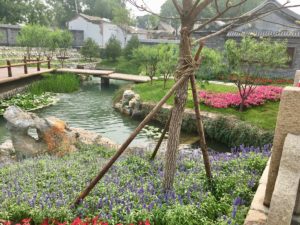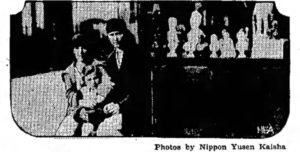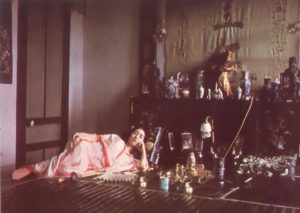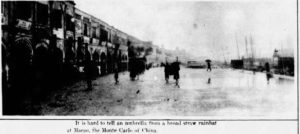Posted: July 3rd, 2017 | No Comments »
You may recall that last month Xinhua was abuzz with talk of a restored brook in the Qianmen District of Peking. I wasn’t convinced such a brook existed to be restored in that area and no maps at my disposal showed any trace. I suggested it might be a fake brook. Well why not we have fake hutongs, fake shikumen, fake temples, fake colonial villas, fake art-deco so why not a fake brook? But there was a real brook, back in the Ming Dynasty….Jeremiah Jenne, a Beijing historian who knows far more than I do about the city, tracked it down – full story here in The Beijinger.

Posted: July 1st, 2017 | No Comments »
The eighth installment of my Crime in the City series for Literary Hub is now posted – being about Singapore it may interest China Rhyming visitors….

Posted: June 30th, 2017 | No Comments »
The Empress Dowager CiXi died on 15 November 1908 in the Hall of Graceful Bird at the Middle Sea at Zhongnanhai. Her funeral was naturally a big deal. Here some pictures taken by a Dutchman, Henri Borel, who happened to be in Peking at the time…

CiXi

The foreign ambassadors at Peking join the funeral procession

Mongolian camels carry tents to the internment site

The imperial bier (coffin) joins the procession

The imperial bier close up
Posted: June 29th, 2017 | No Comments »
A picture by the Japanese steam liner company NYK (aimed at showing the touristic attractions of a holiday to Manchuria) of two Russian women (and a baby) outside their curios store in Harbin in 1929….

Posted: June 28th, 2017 | No Comments »
Laurey Spinney’s new book Pale Rider is about the Spanish flu epidemic of 1918 – however it also goes over the old ground of whether or not the epidemic originated in Asia, China specifically and also considers the theory that it was brought to Europe by the Chinese Labour Corps (who travelled both via the Mediterranean and the Pacific and across Canada to Europe.

With a death toll of between 50 and 100 million people and a global reach, the Spanish flu of 1918–1920 was the greatest human disaster, not only of the twentieth century, but possibly in all of recorded history. And yet, in our popular conception it exists largely as a footnote to World War I.
In Pale Rider, Laura Spinney recounts the story of an overlooked pandemic, tracing it from Alaska to Brazil, from Persia to Spain, and from South Africa to Odessa. Telling the story from the point of view of those who lived through it, she shows how the pandemic was shaped by the interaction of a virus and the humans it encountered; and how this devastating natural experiment put both the ingenuity and the vulnerability of humans to the test.
Drawing on the latest research in history, virology, epidemiology, psychology, and economics, Laura Spinney narrates a catastrophe that changed humanity for decades to come, and continues to make itself felt today. In the process she demonstrates that the Spanish flu was as significant – if not more so – as two world wars in shaping the modern world; in disrupting, and often permanently altering, global politics, race relations, family structures, and thinking across medicine, religion and the arts.
Posted: June 27th, 2017 | No Comments »
A photo exhibition depicting the historic center of Macau will be inaugurated on Friday at the Vila Flor Palace in Guimarães, Portugal. The exhibition features more than 90 photographs of world heritage-listed sites taken by Macau photographer Chan Hin Io, revealing nuances in local cultural heritage. The exhibition will be displayed from June 23 to August 12 in Guimarães before traveling to Porto. It is jointly organized by the IC, the Municipality of Guimarães and the Vila Flor Cultural Centre. More here.

Posted: June 26th, 2017 | No Comments »
These photos are from a collection by Auguste and Louis Lumière who invented the first colour photography process, Autochrome Lumière around 1907. Dyed grains of potato starch and light-sensitive emulsion enabled them to produce colourful photographs without the need for additional colourisation. It was very expensive to do but the effects were amazing…and some chinoiserie was popular being both very ‘on trend’ at the time and also making the most of the colourisation process…

‘Two girls in Oriental costume’, 1908 – assumed to be in Paris

‘Woman smoking opium’, 1915 – the original photo was, I believe, taken in French Indo-China
Posted: June 22nd, 2017 | No Comments »
It’s that time of year again…plum rains…and here’s Macao, in the rain, in 1930….just click to enlarge













